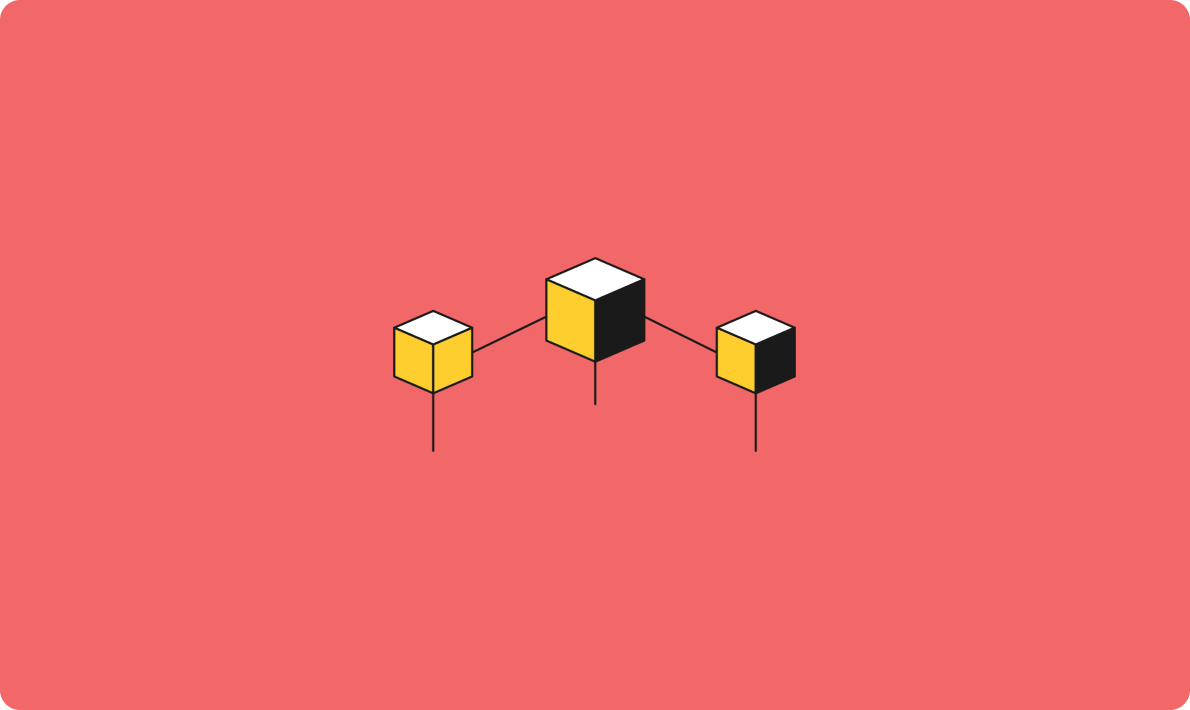
DeepSeek+dify知識(shí)庫(kù),查詢(xún)數(shù)據(jù)庫(kù)的兩種方式(api+直連)
MCP 協(xié)議由一個(gè) client 和多個(gè) server 組成。用戶(hù)發(fā)出請(qǐng)求后,client 會(huì)去調(diào)用 server 執(zhí)行邏輯并返回給用戶(hù)。
client 就是用戶(hù)的對(duì)話(huà)框,server 是一些我們提前寫(xiě)好的代碼,用來(lái)完成我們想實(shí)現(xiàn)的系統(tǒng)調(diào)用。client 和 server 都可以自行開(kāi)發(fā)。
工具是服務(wù)器編寫(xiě),可由客戶(hù)端調(diào)用并由 LLM 用來(lái)執(zhí)行操作的可執(zhí)行函數(shù)。
當(dāng)前對(duì)其支持較多,主要的邏輯都通過(guò)工具來(lái)實(shí)現(xiàn)。
可以理解為預(yù)設(shè)好的提示詞模版,用于補(bǔ)充用戶(hù)的輸入。
假設(shè)用戶(hù)輸入的是:
def add(a, b):
return a + b生成的提示可能是:
Explain how this Python code works:
def add(a, b):
return a + b當(dāng)前對(duì)其的支持相對(duì)較少。
提供服務(wù)端的資源給客戶(hù)端。
當(dāng)前對(duì)其支持相對(duì)較少,一般只有客戶(hù)端顯示調(diào)用的時(shí)候才會(huì)使用。
MCP 的工作流程可以在這里找到:https://github.com/modelcontextprotocol/python-sdk/tree/main/examples/clients/simple-chatbot
簡(jiǎn)單總結(jié)如下:
官方 demo 中的提示詞如下
system_message = (
"You are a helpful assistant with access to these tools:\n\n"
f"{tools_description}\n"
"Choose the appropriate tool based on the user's question. "
"If no tool is needed, reply directly.\n\n"
"IMPORTANT: When you need to use a tool, you must ONLY respond with "
"the exact JSON object format below, nothing else:\n"
"{\n"
' "tool": "tool-name",\n'
' "arguments": {\n'
' "argument-name": "value"\n'
" }\n"
"}\n\n"
"After receiving a tool's response:\n"
"1. Transform the raw data into a natural, conversational response\n"
"2. Keep responses concise but informative\n"
"3. Focus on the most relevant information\n"
"4. Use appropriate context from the user's question\n"
"5. Avoid simply repeating the raw data\n\n"
"Please use only the tools that are explicitly defined above."
)使用 MCP,我們需要:
下面使用 Claude模型,使用 Claude Desktop 作為 MCP Client,自己開(kāi)發(fā) MCP Server 進(jìn)行使用。(也可以直接使用官方的 MCP Server)
使用 python sdk 開(kāi)發(fā),前置需要 Mac,并安裝 python uv 和 Claudedesktop。
官網(wǎng)給出的開(kāi)發(fā)流程:https://modelcontextprotocol.io/quickstart/server
使用 uv 創(chuàng)建開(kāi)發(fā)環(huán)境
# Create a new directory for our project
uv init 項(xiàng)目名
cd 項(xiàng)目名
# Create virtual environment and activate it
uv venv
source .venv/bin/activate
# Install dependencies
uv add "mcp[cli]" httpx官網(wǎng)上有 demo (https://modelcontextprotocol.io/quickstart/server) 可以直接丟給大模型仿照這個(gè)寫(xiě)。
寫(xiě)提示詞的時(shí)候要注意下 mcp server 的提示詞來(lái)源,閱讀源代碼發(fā)現(xiàn)它有兩種方式:用戶(hù)手動(dòng)指定 description,就是自己寫(xiě)提示詞,如果用戶(hù)不手動(dòng)指定的話(huà),就默認(rèn)使用 mcp server 代碼的注釋作為提示詞。
編寫(xiě)完代碼,測(cè)試能成功運(yùn)行之后,需要修改 claude desktop 的配置使其識(shí)別到這個(gè) server,配置路徑:
~/Library/Application\ Support/Claude/claude_desktop_config.json配置的格式
{
"mcpServers": {
"weather": {
"command": "uv",
"args": [
"--directory",
"/Users/wpy/downloads/mcp-test",
"run",
"hello.py"
]
}
}
}保存并退出之后,重啟 Claudedesktop,就能看到對(duì)話(huà)框的右下角出現(xiàn)一個(gè)錘子標(biāo)志:

出現(xiàn)這個(gè)標(biāo)志就表明 desktop 已經(jīng)識(shí)別到了編寫(xiě)的 server,接下來(lái)就可以開(kāi)始使用了。
針對(duì)提出的問(wèn)題,模型會(huì)自主判斷是否要使用這些 server,并在使用的時(shí)候發(fā)出提示:

MCP Server 運(yùn)行在本地,直接訪問(wèn)本地的文件。
server 代碼:
import os
from mcp.server.fastmcp import FastMCP
# Initialize FastMCP server
mcp = FastMCP("file")
@mcp.tool()
async def list_directory_contents(directory: str) -> str:
"""List the contents of a directory.
Args:
directory: The path of the directory to list.
"""
try:
# Get the list of files and directories in the specified path
directory_contents = os.listdir(directory)
if not directory_contents:
return "The directory is empty."
# Format the contents into a readable list
contents = "\n".join(directory_contents)
return f"Contents of {directory}:\n{contents}"
except FileNotFoundError:
return f"Directory {directory} not found."
except PermissionError:
return f"Permission denied to access {directory}."
except Exception as e:
return f"An error occurred: {str(e)}"
if __name__ == "__main__":
# Initialize and run the server
mcp.run(transport='stdio')Claude desktop 的配置文件:
{
"file": {
"command": "uv",
"args": [
"--directory",
"/Users/wpy/downloads/file-mcp",
"run",
"hello.py"
]
}
}
}可以查看本地目錄下的文件。

本地運(yùn)行 vlogs server,通過(guò) MCP 的 Server 去訪問(wèn)。

server 代碼:
import os
import requests
from mcp.server.fastmcp import FastMCP
# Initialize FastMCP server
mcp = FastMCP("file")
# Define the URL for the API endpoint
API_URL = "http://localhost:8428/queryLogsByParams"
HEADERS = {
"Content-Type": "application/json",
"Authorization": "Bearer my-token"
}
@mcp.tool()
async def get_logs(time: str, namespace: str, app: str, limit: str, pod: list, container: list, keyword: str) -> str:
"""Get logs from the API by passing parameters.
Args:
time: The time filter for logs (e.g., "10h").
namespace: The namespace of the application (e.g., "gpu-operator").
app: The name of the application (e.g., "gpu-operator").
limit: The limit for the number of logs to retrieve.
pod: The list of pods to query.
container: The list of containers to query.
keyword: The keyword to filter logs by.
"""
data = {
"time": time,
"namespace": namespace,
"app": app,
"limit": limit,
"jsonMode": "false",
"stderrMode": "true",
"numberMode": "false",
"numberLevel": "h",
"pod": pod,
"container": container,
"keyword": keyword,
"jsonQuery": []
}
try:
# Make the POST request to the API
response = requests.post(API_URL, headers=HEADERS, json=data)
if response.status_code == 200:
# If the request was successful, return the log data
return f"Logs retrieved successfully:\n{response.text}"
else:
return f"Failed to retrieve logs. Status code: {response.status_code}"
except requests.exceptions.RequestException as e:
return f"An error occurred while accessing the API: {str(e)}"
if __name__ == "__main__":
# Initialize and run the server
mcp.run(transport='stdio')Claude desktop 的配置文件:
{
"mcpServers": {
"vlogs-server": {
"command": "uv",
"args": [
"--directory",
"/Users/wpy/downloads/vlogs-mcp",
"run",
"hello.py"
]
}
}
}可以實(shí)現(xiàn)使用 AI 查詢(xún)并分析用戶(hù)的日志。


從效果上看,可以滿(mǎn)足我們的部分需求。
從效果上看,像上面的 demo 一樣,開(kāi)發(fā)一套 MCP Server 和 Client 可以滿(mǎn)足我們的部分需求,實(shí)現(xiàn) AI 的工程化接入。
能實(shí)現(xiàn)的需求包括:
還可以根據(jù)其官方和社區(qū)提供的各種 MCP Server 思考新的功能

之前的 demo 中 MCP Server 的開(kāi)發(fā)都依賴(lài)了官方的 SDK,但是官方的 SDK 存在一些問(wèn)題
可以通過(guò)一些操作解決之前提到的問(wèn)題,而不重寫(xiě) SDK。
總結(jié):本地 AI-Coding 就在 cline 基礎(chǔ)上內(nèi)置一些 MCP 和環(huán)境信息,Web 網(wǎng)站上就在 Nextjs 端做一下 MCP 即可。
Claude 的 SDK 都開(kāi)源了 (例如 python-sdk 位于 https://github.com/modelcontextprotocol/python-sdk),可以仿照開(kāi)發(fā)出其他語(yǔ)言的 SDK。
通過(guò)重寫(xiě) SDK,可以把 MCP Server 放在遠(yuǎn)程并支持其他模型,用戶(hù)本地不需要安裝一堆的 server,除了一個(gè) client,其他都放在遠(yuǎn)程:

采用這個(gè)方案,成本更高,但是可以完全符合我們的需求,并且可以考慮后續(xù)和其官方社區(qū)合作。
MCP 協(xié)議稍微有點(diǎn)復(fù)雜,不過(guò)其中的一些設(shè)計(jì)理念可以參考。
本文轉(zhuǎn)載自公眾號(hào)@sealos

DeepSeek+dify知識(shí)庫(kù),查詢(xún)數(shù)據(jù)庫(kù)的兩種方式(api+直連)
安全的關(guān)鍵.png)
MCP協(xié)議詳解:復(fù)刻Manus全靠它,為什么說(shuō)MCP是Agent進(jìn)化的一大步?

如何給Jenkins API添加節(jié)點(diǎn)

大模型 “蒸餾” 是什么?

Jenkins插件如何調(diào)用MeterSphere API

如何用Jenkins搭建一套CICD

Python如何調(diào)用Jenkins API自動(dòng)化發(fā)布

使用Python腳本操作Jenkins API指南

10分鐘掌握J(rèn)enkins API用戶(hù)與權(quán)限管理
對(duì)比大模型API的內(nèi)容創(chuàng)意新穎性、情感共鳴力、商業(yè)轉(zhuǎn)化潛力
一鍵對(duì)比試用API 限時(shí)免費(fèi)